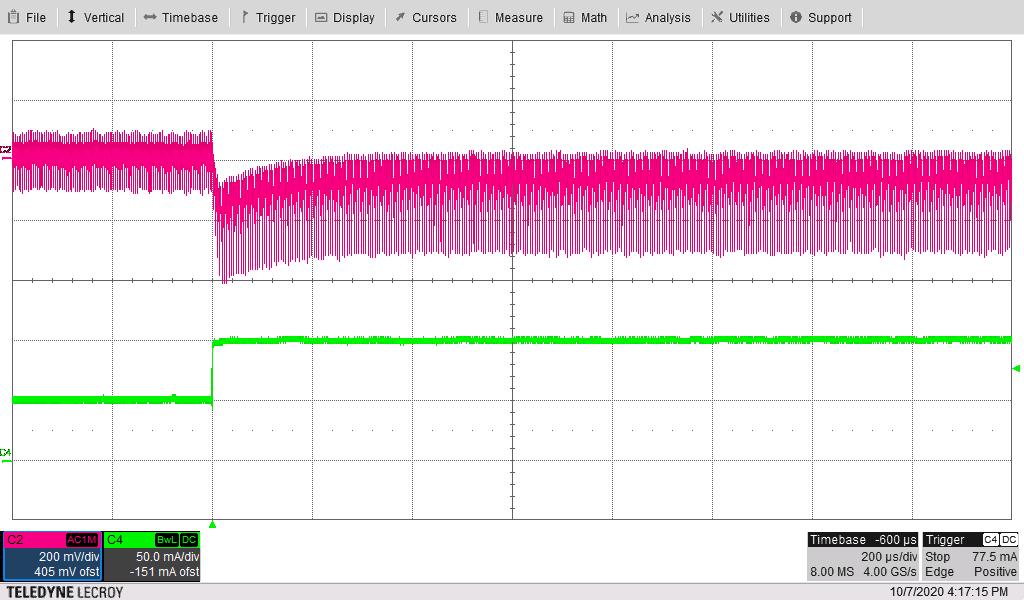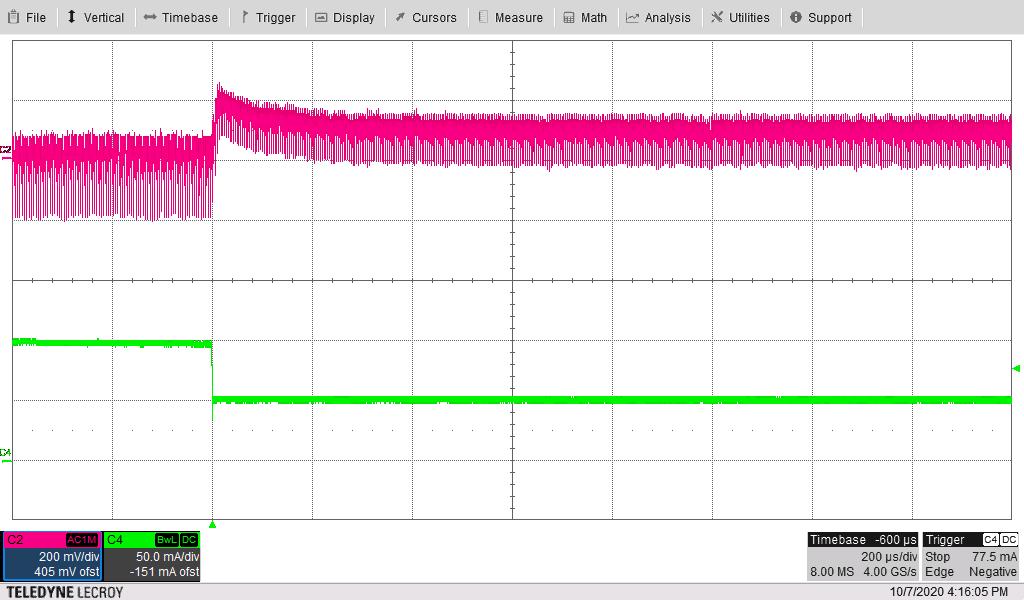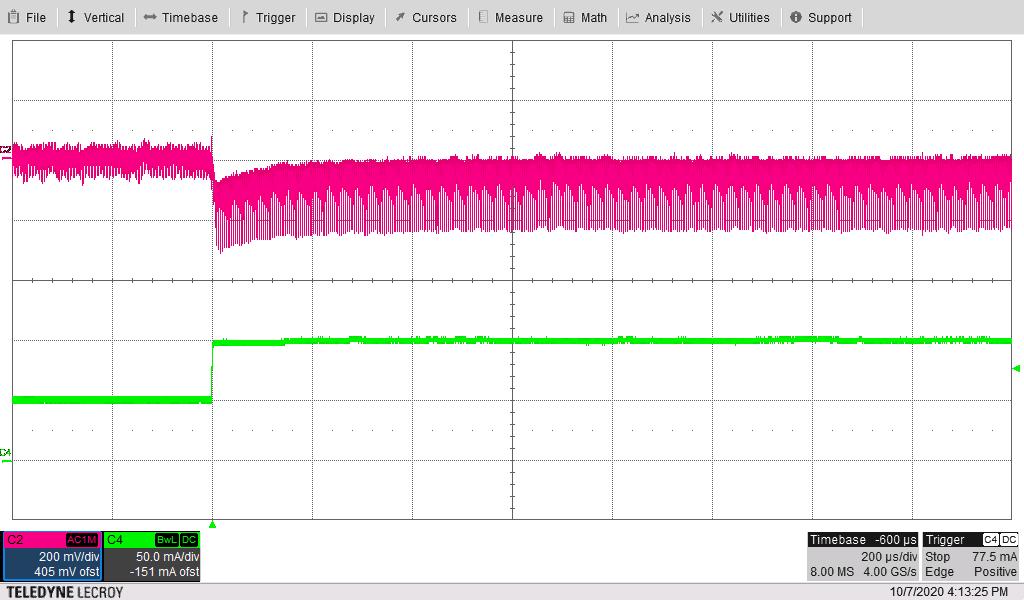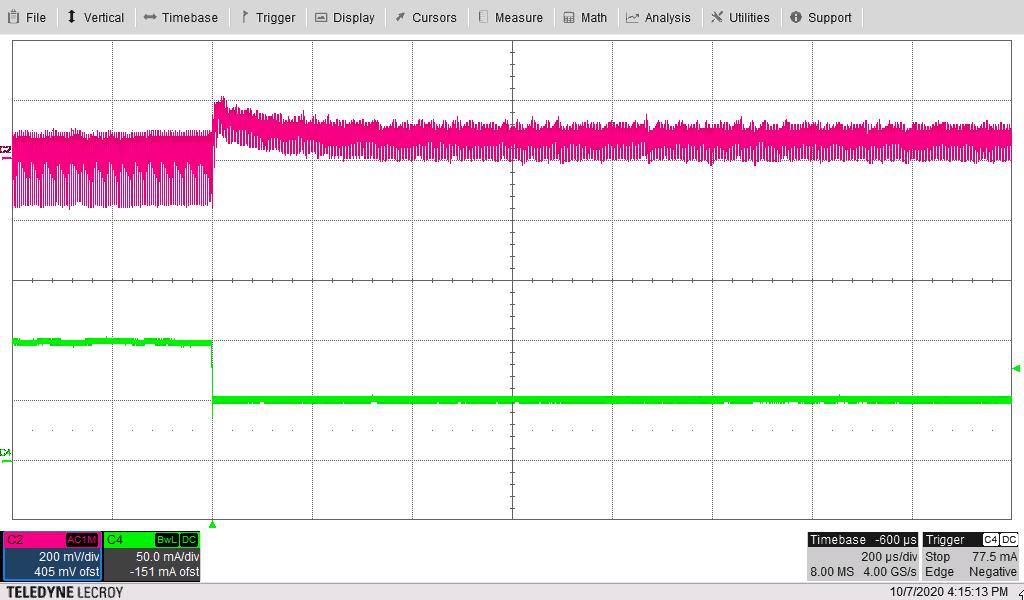TIDT224 March 2021
4.4 Load Transients
The following image shows the 15-V output voltage (AC coupled, Red) when the load current (Green) is stepped from 50 mA to 100 mA. The second output is loaded to 100 mA and the input voltage is 12 VDC.

The following image shows the 15-V output voltage (AC coupled, Red) when the load current (Green) is stepped from 100 mA to 50 mA. The second output is loaded to 100 mA and the input voltage is 12 VDC.

The following image shows the 15-V output voltage (AC coupled, Red) when the load current (Green) is stepped from 50 mA to 100 mA. The second output is loaded to 100 mA and the input voltage is 15 VDC.

The following image shows the 15-V output voltage (AC coupled, Red) when the load current (Green) is stepped from 100 mA to 50 mA. The second output is loaded to 100 mA and the input voltage is 15 VDC.
